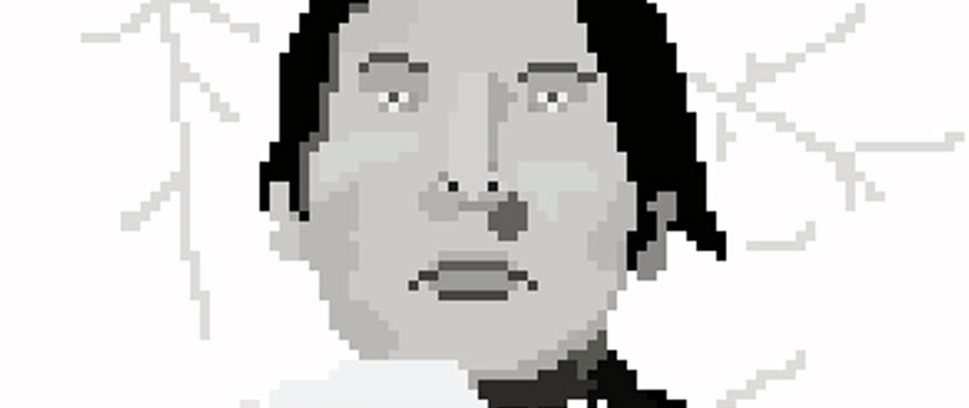
The Audience Can Kill
The following is a reprint from Unwinnable Weekly Issue Twenty-Nine. If you enjoy what you read, please consider purchasing the issue or subscribing.
———
There is no thing new under the sun.” A trite Biblical verse that, in this day and age, seems quaint and out of touch. And yet, just as those very words have been repeated since they were first etched into paper, the debate over the impact of art has become a social deja vu, reincarnations emerging with each generation, shifting as new mediums are born. I never used to get performance art. Seemed like a bunch of pretentious hooey for bored college students lacking any real creative talent. That opinion has changed somewhat as I’ve gotten older, but not by much. It’s rather easy to fake a deep thought if you foist artistic interpretation on the audience, and I suspect that many artists do so not because provoking thought in and of itself is art, but because they themselves lack the ability to produce critical insight.
That being said, I’m a fan of the Serbian artist Marina Abramovic, a woman whose career has spanned decades and influenced everyone from Lady Gaga to James Franco to Jay-Z. Having stumbled across her work as a result – of all things – a pathetic Shia LeBeouf stunt, I became intrigued by the conviction she clearly held with each performance. None were so eye opening as “Rhythm 0.”
Performed in 1974, in “Rhythm 0” the artist stood in front of a table with 72 objects, ranging from the innocuous to the harmful: a rose, a feather, grapes, honey, a whip, scissors, scalpel, a gun, a bullet. The audience was told they could use any of the items on the artist however they chose, assured that Abramovic would not call the police. At the beginning of the six hour performance, the audience initially “played” with the artist, testing her resistance to the objects with caution.
However, things quickly escalated and Abramovic was subjected to torture at the hands of the participants: “It was six hours of real horror. They would cut my clothes, they would cut me with the knife close to my neck and drink the blood and then put the plaster over the wound. They would carry me around half naked, put me on the table and stuck the knife between my legs into the wood.”
As the summary on her official site concludes: “…after being drawn on, kissed, fed, soaked in water, stripped and cut — a fight broke out after one participant loaded the pistol, placed it in her hand and aimed it at her neck. Abramovic kept her pledge, silently enduring both the best and worst the audience had to offer when confronted with the artist as blank canvas. When the performance was complete, she calmly broke her trance-like state and walked directly towards the crowd, which quickly dispersed.”
Abramovic’s performance is a terrifying one and, in many ways, not unlike the culture surrounding online spaces. It serves as an illustration of what human beings will do in the absence of boundaries. In the case of “Rhythm 0,” the artist’s passivity lent to the audience’s boldness in escalating its behavior and ultimately producing harm. On the Internet or in videogames, it’s a lack of physical consequence that produces this effect, users emboldened by the lack of negative feedback from voice inflection and body language. Both produce a perception of permissiveness that not only makes it easier to inflict harm, but also often triggers an unusually hostile response.
By giving the audience a decision to make, they became a part of the art. This is true both with “Rhythm 0” and videogames, though in the former the antagonist or protagonist roles are more clearly defined. Now imagine if they were to intersect as a videogame where “Rhythm 0” is constructed as a virtual reality. The player is given those same 72 tools and a subject who will not resist. A hidden timer ticks away, silent witness to their decision making process, noting their response to the atmosphere of permission.
How would the presence of NPCs or other players influence the behavior? If the game were two player, and the first user’s actions would negatively affect the other’s gamescore, would that act as a deterrent or a motivator? How might their actions be altered by the presence of a life meter or a morality bar? And what of the added psychological dimension with regard to the uncanny valley? Is our ability to emotionally engage a fictional person influenced by their appearance? If we see them as less human-like, do we see them as less human? (And while Abramovic herself avoids the topic in her work, it is worth asking how the response might differ based on the gender or race of the protagonist and of the player.)
By looking at the behavior online and in videogames, we can perhaps find some answers. The effect of virtual avatars on human sociology is a topic that has been discussed at length, resulting in two important observations. We invest our identity into virtual representations of ourselves. Simultaneously (perhaps due to the universally understood “On the Internet, no one knows you’re a dog”) we place a level of distrust and reduced value on those of others. These avatars sometimes give us the opportunity and means to correct imbalances created by the misfortune of biology, but also result in a physical separation of identity that manifests in anti-social behavior.
“Identity tourism”, reinforced by the unique impact of gender and race in virtual representations, encourages the casual user to adopt interpretations of demographic behavior while avoiding the social consequences, only further fortifying the trivialization of self representation in online spaces.
The end result is that we become more vicious in our online interactions and these interactions leave a greater impact than those that occur in “real life.” In the boldness of anonymity, we are quicker to inflict pain. In the absence of social context, we’re unable to dismantle it. The wounds take longer to heal. While we maintain that these encounters should have less social consequence, at times they seem to have more.
What will end this destructive warpath of antisocial behavior? The pursuit of real consequence for virtual interactions? A few generations of self correcting and self-policing by the victims of online bullying? For Abramovic it was the ring of a bell, reaching the end of a self imposed commitment to accept the abuse and walking away, returning the concept of consequence:
“What I learned was that… if you leave it up to the audience, they can kill you…I felt really violated: they cut up my clothes, stuck rose thorns in my stomach, one person aimed the gun at my head, and another took it away. It created an aggressive atmosphere. After exactly 6 hours, as planned, I stood up and started walking toward the audience. Everyone ran away, to escape an actual confrontation.”
While Marina had a clearly predetermined set of rules that ultimately redeemed her from more substantial physical harm, online, few have such freedom. One can walk away from a computer, but they can’t walk away from the necessity of social media and the role that the Internet plays in our daily lives. Many careers now rely on accessibility and self-promotion in ways that only social media can facilitate; it has acted as an equalizer in a world that generally only rewards those who already have resources. Our ability to engage and interact has become the new currency.
And yet the flimsy meritocracy we have formed is now threatened more than ever, with aggressive behavior used to maintain the status quo where wealth and lack of opportunity once kept guard. Marina herself excels in embracing the virtual future. She’s participated in a number of new media projects that take her far from the days of her humble Eastern European upbringing, including a music video with Jay-Z and an album collaboration with Lady Gaga.
Pippin Barr’s has made two Abramovic videogames: The Abramovic Method Games, made with her collaboration, and The Artist Is Present, made without. Whatever the impact of anonymous social interaction, she has escaped that, no doubt in part by her inaccessibility (perhaps an ironic observation, given the interactive nature of her performances). Can we manage to balance a world wherein rapid-fire human interaction can be both boosted by anonymity while impervious to downsides?
Can our emotional evolution even adapt to the current social climate we’ve created? Whatever the case, our inability to humanize an avatar is not solely responsible for the aggressively antisocial behavior that manifests in online spaces. “Rhythm 0” teaches us that while we hold Internet anonymity as the cause of breakdown in civil discourse, the social contract keeping us from engaging in destructive behavior towards others has always been a shaky one. But what they have in common is audience participation and perception of permission. What the audience can do, they will. This is not a problem that can be solved by well intentioned calls to common decency and community self policing but rather, breaking the spell, stepping into the crowd and returning the virtual realm to the reality of consequence.





